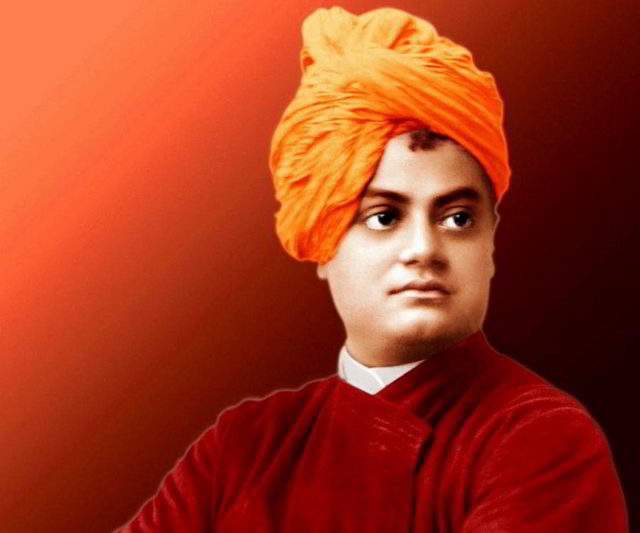Colonial rulers did much more than exploiting India as an economy. They fashioned an image of the native Hindu that was effeminate, impotent, coward and someone who always needed a man of a different race to rule him and his nation. Such a portrayal instilled a feeling of Shame in the heart of the Hindu man.
He started to associate his failure with the fact of being a subject of British masculinity. Shame is a powerful emotion, the feeling that someone has failed leads to helplessness and humiliation.
It then expresses itself explicitly by acts of violence and an aim to remake the world, in which helplessness is not threatened by anyone and one has total control.
The need to fashion an effeminate image of the native
In the late nineteenth century, there was a considerable rise in the Bengali population of western-educated middle-class Indians who were at the first place educated to become trusted allies of the colonial rulers but the outcome was quite different.
This new class of educated Indians wanted the same privileges as the white men in India. And, when they were denied of the same, they started forming their own associations similar to the one that colonisers had.
The white administrators-cum-scholars started writing about India and its people and made changes in policy because,
a) to crush the hopes of these Indian men,
b) the colonisers wanted to establish the legitimacy of their rule and
c) there was a growing acceptance of the view that India could be best governed by applying indigenous traditions.
Complexity of Indian tradition and highly masculine nature of colonizers became the basis of colonial writing
Tradition in India has always been complex, on one hand, we have laws like Manu smriti and on the other hand, we have books like the Kama sutra.
The women belonging to the Brahminical class were mostly subjected to atrocities by men. Whereas, lower-class women were not bound by strict laws and were also, allowed to work due to their poverty. On the contrary, white men never allowed their women to work; they were well protected inside the house.
Sex was widely accepted in Hinduism as normal and believed that it should be cultivated. There are three aims (trivarga) of human life namely dharma, artha and kama.
For example, among the many stories of Ganesha’s birth, in one of them, Ganesha has been seen as the creation of Shiva and Parvati’s blood which dropped while they were having intercourse.
Such a ‘non-serious’ tradition was constantly and repetitively told by masculine, aggressive and powerful colonisers as being feminine, soft, playful and non-aggressive.
Also, the mentioned feminine characteristics were held responsible for the unfortunate fate bought upon India. It is not surprising that the result was shame. On the contrary, the Muslims were recognized as a militant race but not civilised enough.

To map the difference, think of Krishna, who is portrayed as enjoying an active sexual life, with sensuous and beckoning arm gestures.
Gods of Hinduism are very much emotive unlike the gods of monotheistic religions (Christianity and Islam).
There the God is portrayed as a pure spirit and asexual, especially in Christianity where Jesus was a virgin birth. Christianity sees sexuality as a problem and women as a temptation for sin and only acceptable in marriage.
Hence, a real man does not roam around like Krishna, playing flute and dance but is strict, militant and aggressive whose sexuality is seen only in aggressive forms and not in a sensuous way.
Now, the mind of a Hindu feels that he is ought to be respected but he is not a real man as he has let this happen to himself.
Also see: In Pics: Not Just The British- Check Out These Other Colonial Rulers Of India
Examples of colonial writings
Richard Orme, 1770s, wrote in History of the Military Transactions of the British Nation in Indostan, “…all natives showed ‘effeminacy of character’ but that the Bengalis were ‘still of weaker frame and more enervated character.”
In the 1820s, Bishop Heber wrote “Bengalis were regarded as ‘the greatest cowards in India’” and that the ‘term Bengali [was] used to express anything which was roguish and cowardly.
For James Mill, “Hindus ‘possess[ed] certain softness both in their persons and in their address’ that distinguished them from the ‘manlier races’ of Europe.”

Macaulay, in his Essay on Robert Clive, gave the following description of Bengalis:
“The physical organization of the Bengalee is feeble even to effeminacy. He lives in a constant vapour bath. His pursuits are sedentary, his limbs delicate, his movements languid.
During many ages he has been trampled upon by men of bolder and more hardy breeds. Courage, independence, veracity are qualities to which his constitution and his situation are equally unfavourable.”
Effect on the Indian population
Now, the Indian population wanted to undo what has been done, establish its own masculinity and change the focused part of their culture.
Adi Brahmo Samaj launched a drive for the physical regeneration of Bengalis.

Swami Vivekanand wanted to cultivate a ‘manly’ physique; in his most quoted words on the subject, he is reported to have remarked: “You will be nearer to God through football than through the Bhagwad Gita.”
In the process of educating the youth, an image of Hindu Masculinity was fashioned which was war-like, strong, and aggressive and in a similar way they refashioned their gods in support.
Historically, it can be seen, the god’s image was very different from the contemporary portrayal. Aggression among Hindu men was inspired deeply by shame at their own history and culture.
Change in policy and its effect
British needed universal criminal and commercial laws but they gave their subjects little space in other areas.
This was a way of giving Indians some power, so that, they do not feel the need to rebel in frustration of feeling powerless and emasculated. They had control over their ancestral property and women.
So, what the Indian men were not able to do outside the house, (i.e. makes rules for their country, have some power to control things, have property, etc) they did it inside the house.
They exercised power on their women, took out frustration on her and created their house as the nation and themselves as rulers of it.
Sources: Clash from within, Colonial masculinity (books)
Image Credits: Google Images
Find the blogger: @kumar_darshna
You’d also like to read:
Why Did The British Introduce Segregation Of Genders In Schools When India Never Had That Practice?





























Interesting read. It’s quite ironic that the west is now more open to sexuality and India is passing off Victorian-era morality as authentic Indian culture.